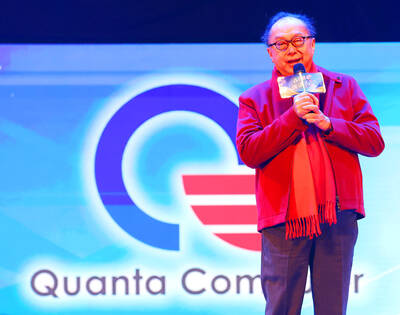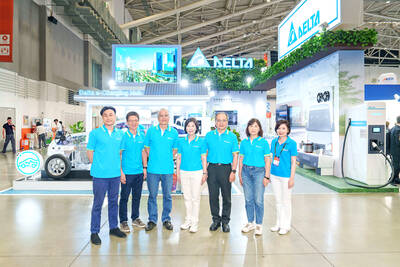AFP, TOKYO
An economy in recession, a banking system lying in tatters and a government trying to spend its way out of crisis. Sounds familiar? It does to Japan.
As Washington prepares to pump billions of dollars into the crippled US economy to try to prevent a long and deep recession, analysts here say the lesson from Japan’s recent experience is that spending can ease the pain.
But the problems will not go away unless the financial system is also fixed, they say, recalling how Japan suffered a decade of stagnation after its economic bubble burst in the early 1990s.
“In general, the fiscal stimulus was quite effective when they used it,” said Richard Jerram, chief economist for Macquarie Securities in Tokyo.
But the spending was often wasteful and the Japanese government was slow to address the problems in the banking sector, he said.
Moreover, each time the party got going again, the government took away the punch bowl.
REAL OPPORTUNITY
For the US, “the real issue is whether they take the opportunity to push ahead with resolution of the financial system problems,” Jerram said.
As the economy rebounds, the banks’ troubles may also appear to ease, but unless they are really fixed, when the fiscal stimulus runs out of steam you end up back in the hole, he said.
Japan is littered with expensive bridges, dams, highways, conference centers and other construction projects, a legacy of efforts by Asia’s largest economy to build its way out of recession.
So much money flooded into infrastructure in Japan in the early 1990s that one in 10 Japanese workers was employed in the construction industry.
Views are still divided on how much difference Japan’s massive spending packages made, but JP Morgan Securities chief economist Masaaki Kanno believes they cushioned the blow, even if they were not a magic wand.
The fiscal spending was “one factor behind the recovery,” said Kanno, remembering each time Japan increased its public investment in the early 1990s after the economic bubble burst, the economy showed an improvement afterwards.
“The first lesson from Japan in the 1990s is that public investment helps to boost the economy. But the second lesson is that a recovery based on fiscal stimulus is very volatile. It can slip into a second dip,” Kanno said.
Hoping to contain rising public debt, the government in 1997 upped the consumption tax from 3 percent to 5 percent, sending the economy plunging back into recession.
Much like the current US woes, the Japanese economic slump was set off by the collapse of a real-estate boom, which left Japanese banks saddled with giant debts and ushered in a decade of economic stagnation.
TOO LITTLE, TOO LATE
The central bank slashed interest rates and the government eventually injected public funds into financial institutions, but many experts say the rescue efforts were poorly planned and came too late.
Japan was too slow to act. It was too slow to cut interest rates. It was too slow to address the financial system issues. It was basically behind the curve for a decade, Jerram said.
When the economy was back on the road to recovery in the mid-2000s, successive prime ministers, including the reform-minded Junichiro Koizumi, tried to slim down the country’s bloated infrastructure spending budget.
But many rural areas rely on public works and spending cuts have often met resistance, even within the ruling Liberal Democratic Party, whose half-century grip on power is looking precarious.
“It is very hard to stop public works once an interest group emerges. I hope the United States pays attention to this point,” Kanno said.

Quanta Computer Inc (廣達) chairman Barry Lam (林百里) is expected to share his views about the artificial intelligence (AI) industry’s prospects during his speech at the company’s 37th anniversary ceremony, as AI servers have become a new growth engine for the equipment manufacturing service provider. Lam’s speech is much anticipated, as Quanta has risen as one of the world’s major AI server suppliers. The company reported a 30 percent year-on-year growth in consolidated revenue to NT$1.41 trillion (US$43.35 billion) last year, thanks to fast-growing demand for servers, especially those with AI capabilities. The company told investors in November last year that

Intel Corp has named Tasha Chuang (莊蓓瑜) to lead Intel Taiwan in a bid to reinforce relations between the company and its Taiwanese partners. The appointment of Chuang as general manager for Intel Taiwan takes effect on Thursday, the firm said in a statement yesterday. Chuang is to lead her team in Taiwan to pursue product development and sales growth in an effort to reinforce the company’s ties with its partners and clients, Intel said. Chuang was previously in charge of managing Intel’s ties with leading Taiwanese PC brand Asustek Computer Inc (華碩), which included helping Asustek strengthen its global businesses, the company

Taiwanese suppliers to Taiwan Semiconductor Manufacturing Co. (TSMC, 台積電) are expected to follow the contract chipmaker’s step to invest in the US, but their relocation may be seven to eight years away, Minister of Economic Affairs J.W. Kuo (郭智輝) said yesterday. When asked by opposition Chinese Nationalist Party (KMT) Legislator Niu Hsu-ting (牛煦庭) in the legislature about growing concerns that TSMC’s huge investments in the US will prompt its suppliers to follow suit, Kuo said based on the chipmaker’s current limited production volume, it is unlikely to lead its supply chain to go there for now. “Unless TSMC completes its planned six

Power supply and electronic components maker Delta Electronics Inc (台達電) yesterday said it plans to ship its new 1 megawatt charging systems for electric trucks and buses in the first half of next year at the earliest. The new charging piles, which deliver up to 1 megawatt of charging power, are designed for heavy-duty electric vehicles, and support a maximum current of 1,500 amperes and output of 1,250 volts, Delta said in a news release. “If everything goes smoothly, we could begin shipping those new charging systems as early as in the first half of next year,” a company official said. The new